How (and why) to Dry Brine
For better texture and flavor
Hey, everyone!
Quick announcement before today’s post. I’m hosting a live cooking class next week!
The class will take place on Thursday April 13th at 6pm EST. I’ll be teaching you how to master the art of making corn tortillas from scratch.
Making corn tortillas at home is a lot easier than most people think, and they’re quite literally 100x better than their store-bought counterparts. You don’t need any special equipment, and they’re a great way to elevate your taco night, turn leftovers into something special, and to impress your friends.
If you decide to join, you’ll need to purchase some masa harina before class— I recommend Masienda (my favorite), Gold Mine, or Bob’s Red Mill. If you have a tortilla press, that’s great, but you don’t need one. One large skillet for cooking the tortillas, and another flat-bottomed pan for pressing them is all you need. Feel free to shoot me a message if you have any questions!
Today’s newsletter is about the art and science of the dry brine.
If you want to cook a restaurant-quality steak at home, I think the single most impactful thing you can do is dry brine your meat. While this does require you to plan a little bit in advance, the results are well worth it. Dry brining significantly improves both the texture and flavor of your final product.
What is Dry Brining?
Dry brining, at its most basic, is the process of salting meat in advance of cooking.
You salt the surface of the meat and then allow it to rest in the refrigerator for a period of time until that salt has penetrated and absorbed into the meat. That ultimately results in meat that is more tender, more flavorful, and retains more moisture.
Dry brining is different from wet brining, which involves submerging the meat in a solution of water, salt, and occasionally other seasonings. I personally don’t like wet brining very much— it’s messier, takes up more space, and occasionally even dilutes the flavor of the meat. Dry brining is easier, more effective, and results in a better crust and exterior of the meat after cooking.
When you salt a steak, you draw moisture out from the inside to the surface. With a dry brine, you leave enough time for that moisture to get re-absorbed back into the steak. This carries the salt much deeper into the muscle fibers than if you were to salt the surface and then cook immediately. So you get a more even distribution of seasoning throughout the entirety of the meat, and you get more moisture in the final product.
The salt also helps to break down proteins in the meat. By giving it some additional time to work its magic, you get a much more tender texture.
And finally, because the moisture from the surface has been re-absorbed by the meat (and because you’re not submerging it in water through a wet brine), dry-brined meat forms a better crust and a crispier skin/exterior.
How to Dry Brine
Dry brining is extremely easy.
Start by patting your meat dry with paper towels. Then, generously season it on all sides with salt.
Make sure you’re using a salt with a fairly small grind size for this (I like Redmond or Diamond Crystal) as a coarse flaky salt won’t adhere. I never measure this, and I tend to use a generous amount of salt, especially for bigger cuts. General wisdom is 1/2 tsp of kosher salt per pound of meat, but use your best judgement— I probably use a bit more.
To properly salt, take a big pinch of salt, hold it well above the steak, and sprinkle to get a hefty even distribution. Repeat for all sides.

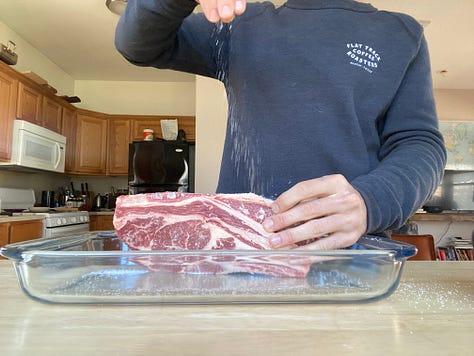
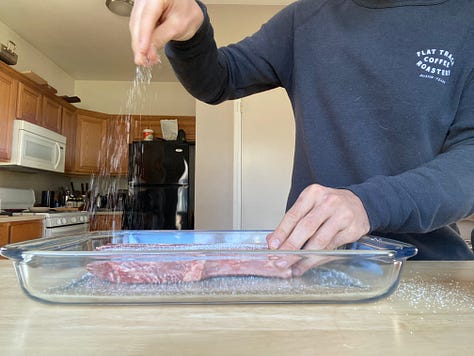
For best results, place the meat on a wire rack-lined baking sheet. This will allow for airflow both under and over the steak, which is important. In a pinch, you can just leave it directly on a tray or plate.
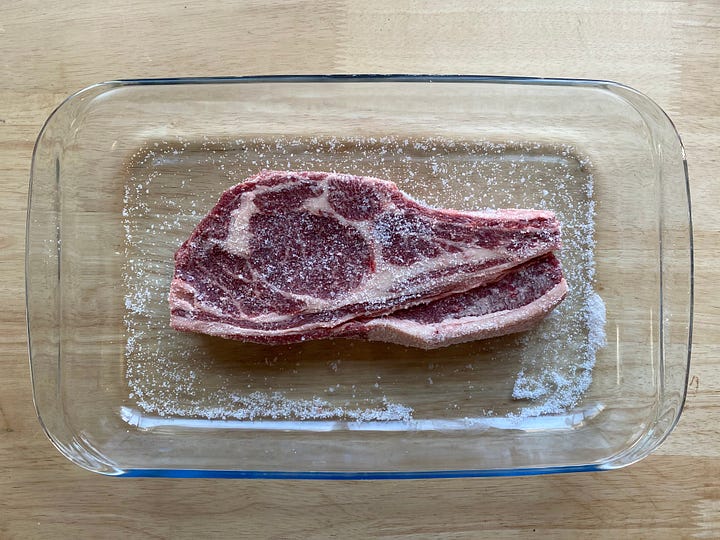
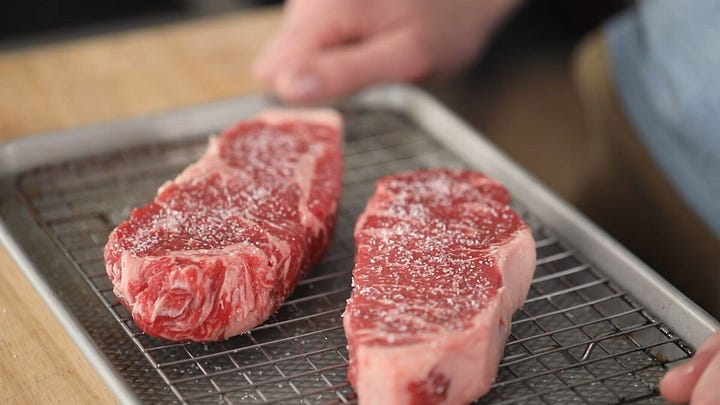
Place the tray or plate uncovered in the refrigerator for 12-24 hours.
Pull it from the fridge about an hour ahead of when you cook in order to allow the meat to come to temperature.
Now you’re ready to cook.
Important note: if you dry brine, you do not need to salt your steak again before cooking.
How Long Should You Dry Brine?
As a general rule of thumb, you should dry brine your steak for at least 45 minutes ahead of cooking. If you plan to cook your steak sooner than that, you should just salt it right before cooking.
The reason is that dry brining will draw out moisture from the meat. 45 minutes or more gives it time to reabsorb that moisture. Any less than that and you’ll simply lose moisture from the steak, taking precious flavor and making it harder to get a good sear.
I personally use dry brining most often when I’m cooking steaks, but it works well for almost any kind of meat. It works great for braising cuts, and is especially important if you’re reverse-searing a big cut.
As a general rule of thumb, use the following time frames to guide you.
poultry: 12-24 hours
beef: 12-24 hours, up to 36 hours for thick cuts
pork: 12-24 hours, up to 36 hours for thick cuts
fish: 1-2 hours
As always, let me know if you have any questions!



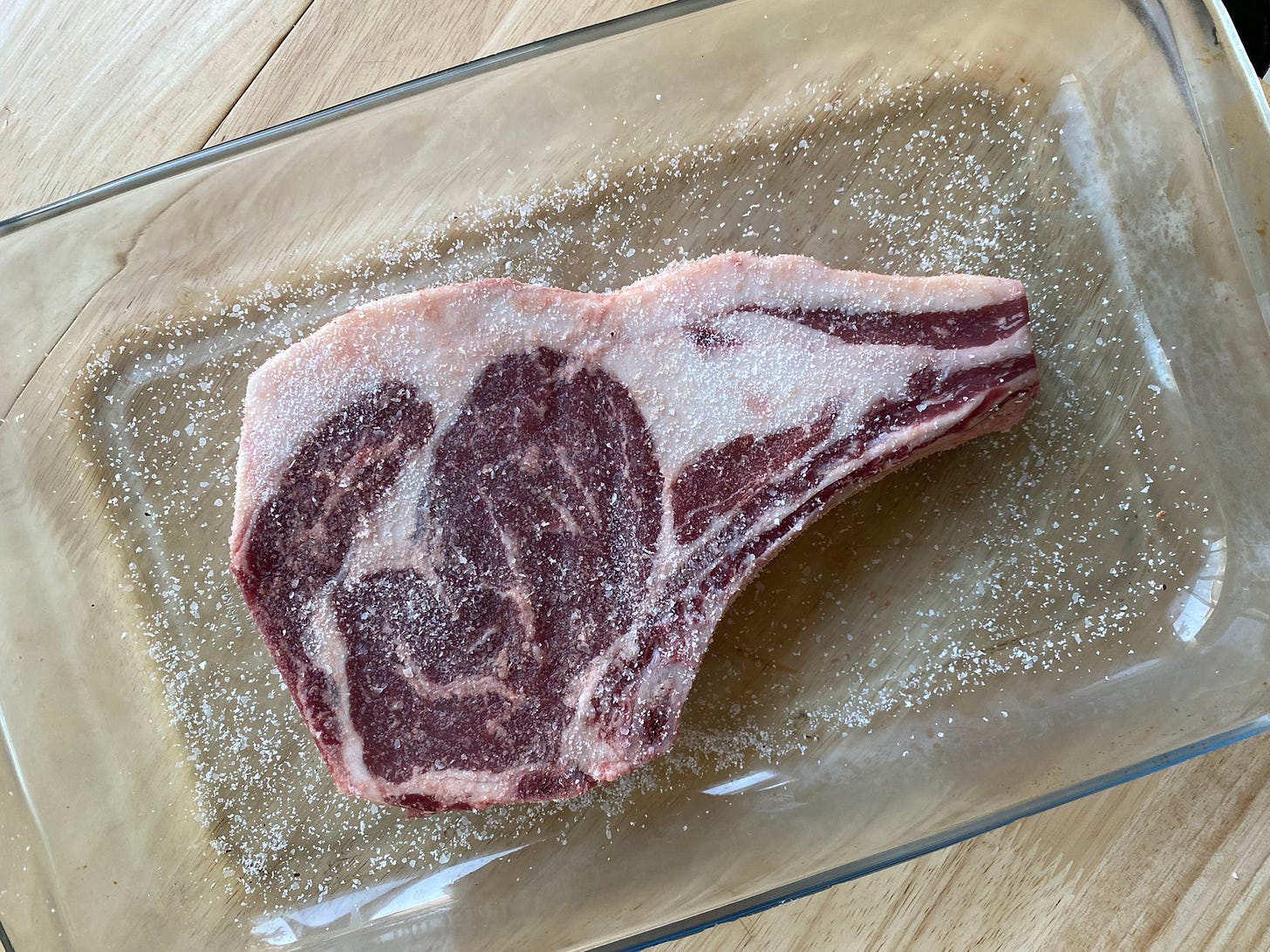
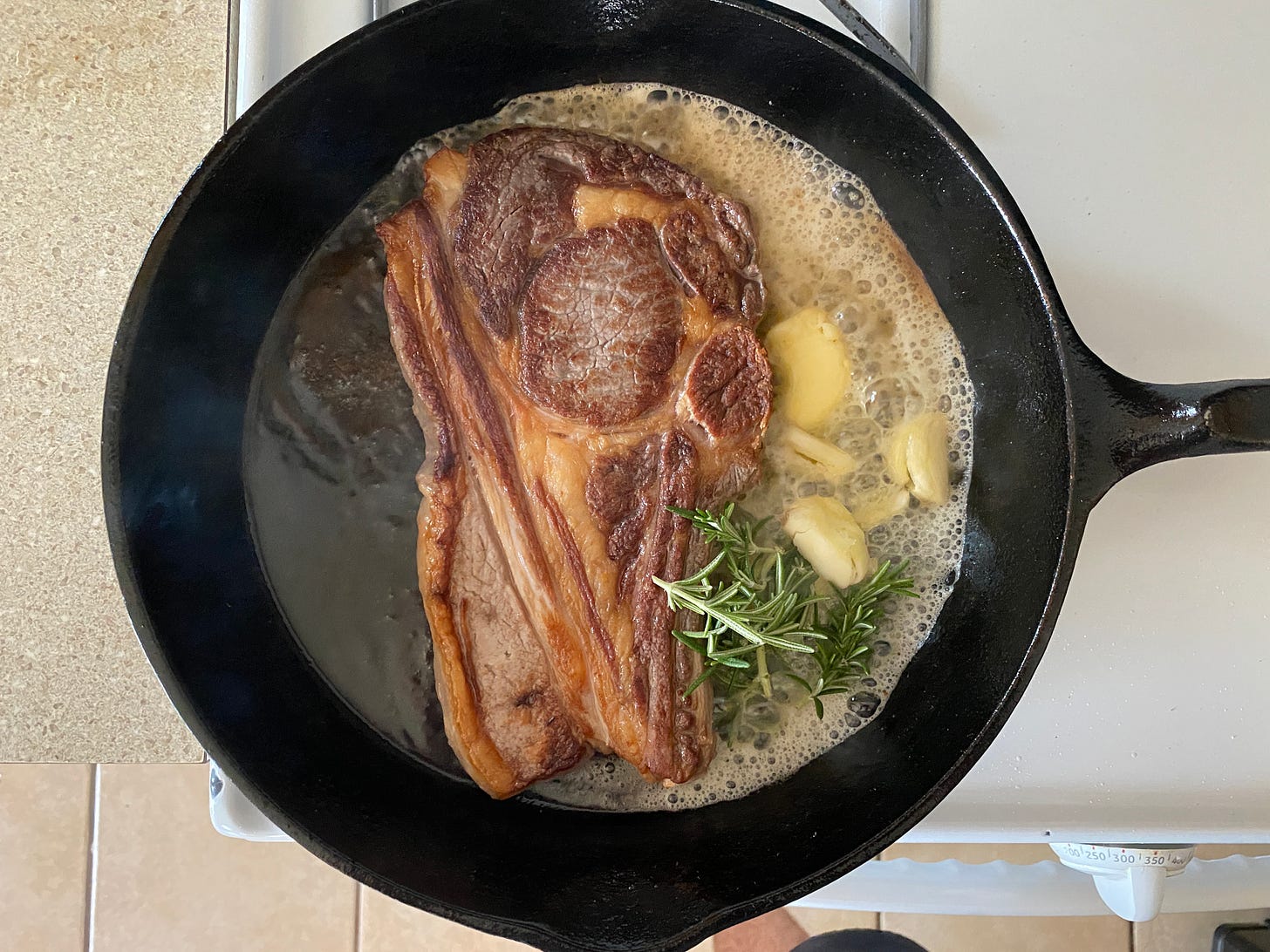
This technique has been a game changer for me this year. The wire rack is such a great detail. Had never though to use it before but now I use the rack all the time
You say to dry brine for 12 to 24 hours. Then you say at least 45 minutes. To me 45 minutes is "just before cooking"... Which is it?